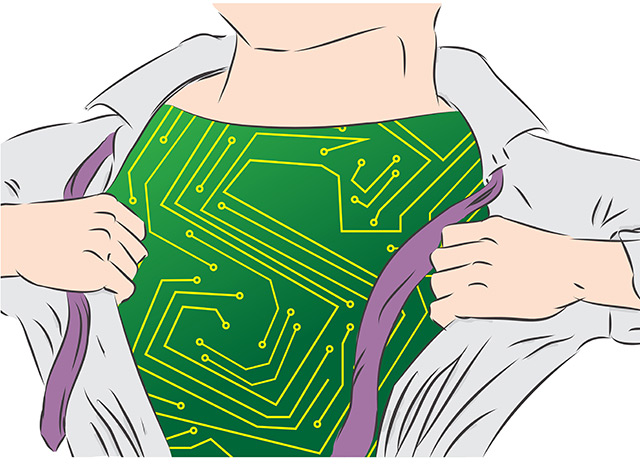Skin sensor made from stretchable electronics could revolutionize stroke recovery
03/10/2018 / By Edsel Cook

Stroke patients and physicians can get live and accurate readings of the patient’s recovering body thanks to newly-developed stretchable electronic sensors. Science Daily reported the new bio-sensor is small enough to be worn outdoors, rugged enough to function during therapy sessions, and precise enough to be used for advanced medical care.
The device is the latest concept of John A. Rogers, an engineering professor at Northwestern University who develops flexible electronics for medical use. He developed it with the assistance of Chicago, Illinois-based research hospital Shirley Ryan AbilityLab.
According to the Science Daily article, Rogers’ new wearable consisted of sensors in direct contact with the skin of the wearer. The bandage-like device delivered details on heart function, muscle activity, sleep quality, and other important health metrics. It can also match the movements of the wearer.
Indeed, Rogers explained that the stretchable electronics are superior to traditional wearables due to the former’s closer integration with the human body.
New wearable sensor doesn’t impede body motions
His throat bio-sensor is designed to help diagnose and treat aphasia, a common stroke-induced communication disorder. The device appraises the swallowing ability and speech patterns of the wearer.
Traditional microphone-based monitoring equipment are unable to tell human voices from ambient noise. They are limited to indoor use, and speech-language pathologists must use them in quiet environments. “Our sensors solve that problem by measuring vibrations of the vocal chords. But they only work when worn directly on the throat, which is a very sensitive area of the skin,” said Rogers. He therefore created flexible materials that could match the movements of the human body, which made the sensor much more comfortable for patients.
The throat sensor is the latest Rogers-developed medical device to see widespread use at the Shirley Ryan AbilityLab research hospital. Wearable bio-sensors on the legs, arms, and chest comprised an intermodal system that provides a detailed picture of a patient’s status.
Sensor data is shown on a dashboard that is easy to decipher for both patients and physicians. The network constantly streams information to the computers and phones of clinicians, ensuring they stay updated no matter where their patient is.
The system lets patients set goals and measures their progress. If a patient is failing to reach a certain metric, the bio-sensor will alert its wearer and the doctor. (Related: New brain-healing bracelet uses vibration to help stroke victims recover faster.)
Stretchable electronics are game-changers in stroke therapy
“One of the biggest problems we face with stroke patients is that their gains tend to drop off when they leave the hospital,” said wearable tech researcher Arun Jayaraman of Shirley Ryan AbilityLab. “With the home monitoring enabled by these sensors, we can intervene at the right time, which could lead to better, faster recoveries for patients.”
The sensors’ wireless communications ability means patients can leave the hospital while wearing said sensors. Doctors can therefore get accurate readings on how their patients are faring in the real world.
“Talking with friends and family at home is a completely different dimension from what we do in therapy,” said Leora Cherney, a colleague of Jayaraman who specializes in treating aphasia. “Having a detailed understanding of patients’ communication habits outside of the clinic helps us develop better strategies with our patients to improve their speaking skills and speed up their recovery process,” she explained. According to Jayaraman, the bio-sensor’s mobility changes the entire “game” of assessing the outcomes of stroke rehabilitation.
The stretchable sensor devices can also benefit patients with other illnesses. Rogers and the Shirley Ryan AbilityLab are also testing them on patients who suffer from Parkinson’s disease.
Keep reading up on new health-related developments at Health.news.
Sources include:
Tagged Under: electronics, future tech, inventions, medical technology, Parkinson's Disease, stretchable electronics, stretchable tech, stroke, stroke patients, stroke recovery, technology, wearable electronics




















